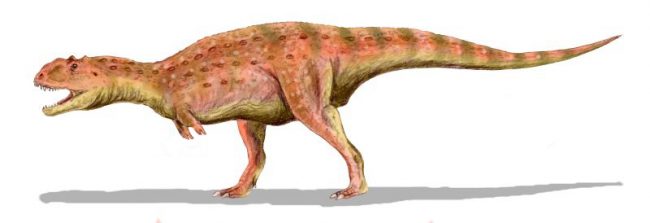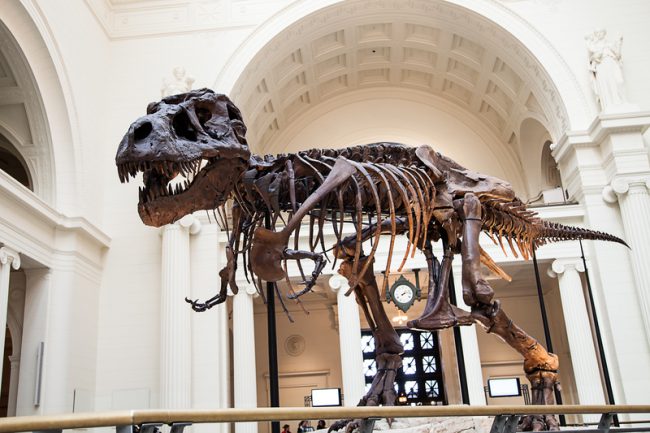Tyrannosaurus rex was one of the most fearsome predators to have ever walked the planet. Its massive, powerful legs were equipped with devastating claws. Its giant jaws came lined with dagger-like teeth that measured 15 cm (6 inches) or longer and could swallow an adult whole. And its lethal arms could tear and twist and... well, actually, no they couldn't.
"Say something about my arms again, I dare you!" (Getty Embed)
For ages, the tiny arms of the T rex have been a subject of jokes and fun. How could an animal so ferocious and deadly have had arms so comically small? The short answer, of course, is that when you've got the best dino-chomping mouth in the business, you don't really need arms for much. Those jaws do it all.
But over the years, there have been scientists who have insisted that the arms may have served a purpose. For example, some researchers thought that the arms could've provided extra grabbing power while the T rex looked to apply the perfect killing bite on struggling prey. You could think of them as hooks, helping to hold things in place. But now thanks to a brand new study at Argonne National Laboratory outside Chicago, Illinois, we can pretty much rest assured that the arms of a T rex were essentially useless.
Scanning Sue
To confirm this, scientists borrowed the arms of Sue, the famous T rex skeleton at Chicago's Field Museum. Sue is one of the most complete Tyrannosaurus skeleton in the world. What were they looking for? The bones of all animals leave behind telltale scars and marks that reveal things about the animal's life. Sometimes they can show an injury that occurred. But even on a healthy adult animal, the bones will show wear and tear from repeated use. When limbs are used a lot, the bones themselves are worn down—both on the outside, and on the inside.
When Sue's arms were scanned, nothing came back showing any stress from repeated use. "It's very early yet," said the museum's associate director, Peter Makovicky, "but it seems like there aren't many signs of stress on the bones that would indicate frequent use."
What were they for then?
Of course, this leads to the same question many have asked: Why did they have the arms at all? Most scientists believe that they were vestigial. This means that the arms may have served more of a purpose in early, smaller ancestors of the T rex. But as the species evolved over millions of years (becoming larger overall and having a powerful set of jaws), the arms became unnecessary to hunt prey. It's possible that if they had not become extinct, they would've eventually have evolved to have no forelimbs at all.

The forelimbs of the Majungasaurus were even smaller than a T rex's were. (Wikimedia Commons)
And certainly Tyrannosaurus wasn't alone in having tiny arms. Other large carnivores, such as Majungasaurus and Carnotaurus, had even smaller forelimbs compared to the rest of their body. Sometimes, a big mouth is all you need!
 "What did you say about my arms?!" Nothing! Nothing! They look great! (© Cmlndm | Dreamstime.com)
"What did you say about my arms?!" Nothing! Nothing! They look great! (© Cmlndm | Dreamstime.com)









